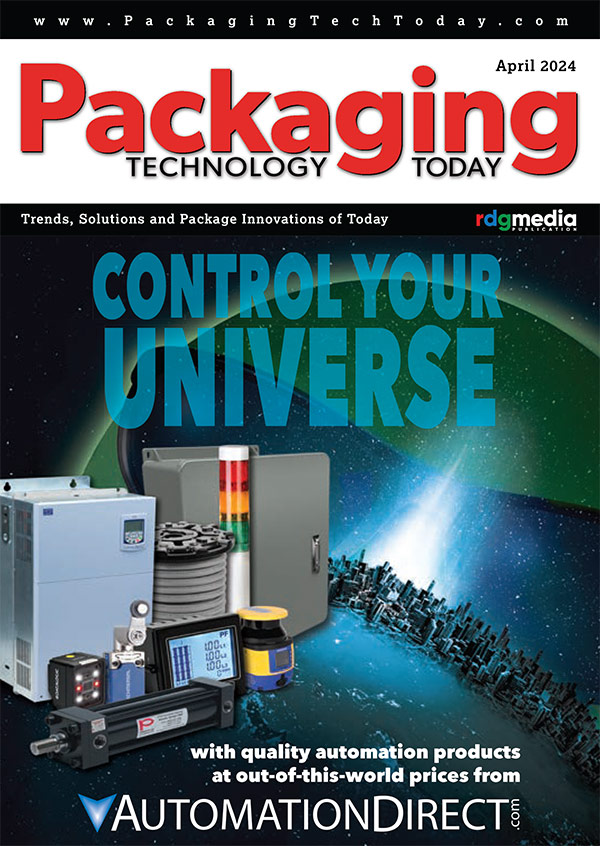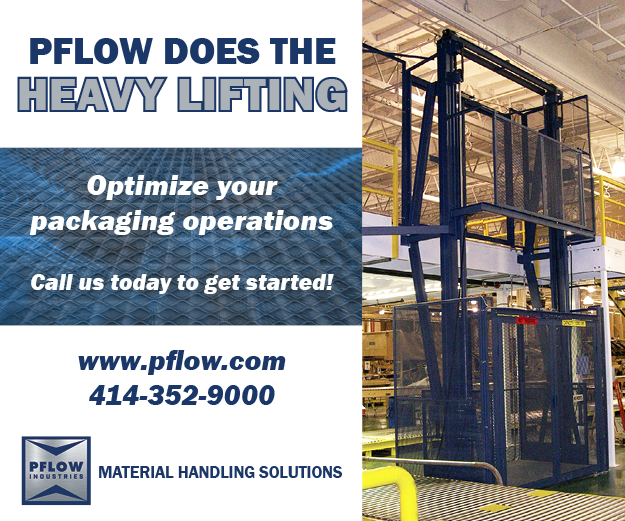Frequently Asked Questions: Controlling Dangerous Dusts Generated During Packaging Processing
Dust particles become airborne when manufacturing and processing paperboard, plastic and metal packaging. Because these particles pose both occupational exposure risks and combustible dust hazards, dust collection systems make packaging facilities safer and cleaner. However, if installed improperly or not designed for your specific operation, the dust collector can cause a combustible dust explosion.
Here are the most frequently asked questions about controlling dangerous dusts to maintain a safe work environment at packaging facilities.
What makes a dust dangerous?
When products are manufactured indoors, small particles often become airborne and have the potential to do serious harm to people, products, equipment and/or facilities. The biggest threats are occupational exposure and combustible dust explosions.
Dusts can contain ingredients that are toxic when swallowed or inhaled. They also can cause dermatitis and allergic reactions. More seriously, dust particles can become embedded in the lungs and can cause respiratory problems like asthma and lung cancer.
Dusts that are combustible can cause fires and explosions. When combustible dusts are collected from the air into a dust collection system, the system itself can be a source of combustible dust explosions if not properly protected. Besides being required to do so by OSHA, companies are ethically obligated to protect workers from these hazards.
Which agencies regulate dangerous dusts?
OSHA is ultimately responsible for protecting employees from dangerous dusts. OSHA requires companies to control dust emissions in indoor workplaces and to comply with legal limits set for each ingredient and material. If no legal limits are applicable, the company must define in writing, implement and measure its own environmental safety plan.
OSHA requires companies to comply with permissible exposure limits (PEL) for workers. The PEL is the maximum air concentration to which a worker can be safely exposed for an eight-hour shift without potentially suffering adverse health effects. OSHA has established PELs based on an eight-hour time-weighted average (TWA) for hundreds of dusts. For dusts not listed, OSHA has established a general PEL for dust, referred to as Particulates Not Otherwise Regulated.
The National Fire Protection Agency (NFPA) plays a major role in recommending standards and guidelines for managing combustible dusts. If manufacturers don’t follow these guidelines, they can be fined by OSHA, face legal scrutiny and risk a damaged reputation.
What are common dust hazards in paper packaging processing?
There are many paper manufacturing processes that generate airborne dust including trimming, die cut pressing, shredding, baling and vacuum feed conveying. If not captured and contained, these dusts expose workers to health and safety hazards and can cause combustible dust incidents.
The NFPA classifies the explosibility of dusts using their Kst values ranging from zero to greater than 300. NFPA terms any dust with a Kst above 0 as explosive, which requires you to provide explosion protection on your dust collector.
Class ST1 dusts have a Kst below 200, Class ST2 dusts range from 200 to 300 Kst, and Class ST3 dusts exceed 300 Kst. Most paper dust is classified as ST1 and is around 100Kst.
What are common dust hazards in the plastic packaging processing?
Plastic packaging manufacturing, processing and handling produces dust that are both health and explosion hazards. Fumes from plastic packaging processing also reduce air quality because plastics are comprised of chemicals.
Dust and fumes from plastic products are generated during processes including extrusion, cutting, trimming, sanding, machining, drilling, pelletizing, granulating, shaping, forming and conveying.
Toxins found in plastics dust and fumes can cause mild to severe headaches, nausea, dizziness and irritation to the eyes, nose and lungs. In some cases, these effects can be long term and irreversible.
Dust from plastics processing is combustible and explosive. As with any industrial process that generates dust, an explosion can occur when a suspended cloud of combustible dust meets an ignition source.
What are common dust hazards in metal packaging processing?
Metal packaging, such as steel or aluminum, is used in the food and beverage, personal care, household products and shipping industries, to name a few.
Metalworking processes such as welding, thermal cutting, sanding and polishing generate hazardous dust and fumes. Exposure to welding fumes can result in eye, nose and throat irritation, dizziness and nausea. Prolonged exposure to welding fume may cause lung damage and various types of cancer. OSHA has established PELs based on 8-hour TWAs for hundreds of dusts, including the numerous metals contained in welding fumes.
In addition, metal dusts are combustible and explosive. Even a small amount of dust can have severe consequences if it encounters an ignition source.
What equipment is used to capture hazardous dusts?
Industrial dust collectors are used to capture and contain dust and other harmful particles from the air in plants, factories and other processing facilities. Dust collectors are generally large pieces of equipment that can be placed inside or outside the manufacturing facility.
Collectors capture dust by continually cycling the dust-laden airstream through a series of filter cartridges. Much of this airborne dust is too small to be seen with the naked eye. The dust remains on the cartridges, and the clean air is returned to the work environment or vented outside of the facility.
How does an explosion occur in a dust collector?
A dust collector is a closed vessel, and any closed vessel that is full of dry particles is ripe for an explosion. An explosion usually begins when a suspended cloud of combustible dust is present in high concentration inside the collector. As the fan draws in large volumes of air, an outside spark or ember can be sucked into the collector and collide with the dust cloud under pressure, triggering an explosion. The source of the spark may be a production process, a cigarette butt thrown into a dust capture hood or a static electricity discharge from improperly grounded nearby equipment.
How do you protect a dust collector from a combustible dust explosion?
First of all, it is important to have all collectors sized properly for the facility they will be handling. Second, it is important to understand that combustible dust explosions can’t always be prevented from occurring in the dust collector. However, they can put systems in place that ensure that the explosion doesn’t cause harm. These systems are called explosion protection systems, and there are a variety of options.
Most applications require inlet isolation to the process along with explosion venting. Although explosion venting is desirable because it is most cost-effective, some facilities may also be required to have an explosion isolation valves or integrated safety monitoring filters. This is often the case when the facility is returning the clean air back into the workspace.
All of these mitigate incidents and prevent the flame front and pressure to travel to process areas. The NFPA provides guidelines to design, locate, install and maintain these explosion protection devices to minimize harm to personnel as well as structural and mechanical damage.
What does explosion venting do?
A well-designed explosion vent functions as a weak element in the dust collector’s pressure envelope. It relieves internal combustion pressure (back pressure) to keep the collector from blowing up into pieces. The vent’s function is illustrated in the series of photos below that show a staged deflagration in a cartridge dust collector equipped with an explosion vent.
Typically, the collector is located outside so that it vents away from buildings and populated area to a safe location. If it is properly equipped and located indoors, standards mandate that you designate a safe area. While explosion venting will usually save the dust collector from being a total loss, the collector can sustain major internal damage. Nonetheless, if personnel remain safe and facility structural damage is minimized, the explosion venting equipment has done its job.
Which facilities are required to have their dust tested?
NFPA standards require a dust hazard analysis (DHA) for any facilities that generate, handle or store potentially explosive dust. The burden of proof is on manufacturers to demonstrate that their dust is not combustible, so it is important for them to have their process dust tested by a valid third party testing lab and keep records on file proving that it is not combustible.
If tests show that the facility has combustible dust, it is required by NFPA 652 to complete a dust hazard analysis (DHA) of their dust collection systems. The also need to keep this report on file to show when requested by the local fire marshal or other authority having jurisdiction. In addition, explosion venting equipment must be inspected at least annually based on the documented operating experience.
How are vents and discharge ducts sized to make sure they are right for a dust collector?
Chapters 7 through 9 of NFPA 68 provide the calculations to use for properly sizing explosion vents, vent discharge ducts (also called vent ducts) and other components. A reputable dust collector supplier will follow the vent sizing equations in Chapter 8 (Venting of Deflagrations of Dusts and Hybrid Mixtures). They can also supply a calculations sheet that becomes part of the documentation you keep on file to demonstrate your plant’s compliance.
Should all dust collectors be installed outdoors?
Obviously, placing dust collectors outdoors is the safest option if they vent away from buildings and populated areas. However, it isn’t always feasible to place them outside. Dust collectors placed indoors must have the appropriate explosion protection system if they will handle any combustible dusts.
Is it safe to recirculate the air from your dust collector back into the work environment?
Recirculating heated or cooled air back into the workspace can provide significant energy savings and eliminate the cost to replace that conditioned air. Containing the air indoors also avoids the time-consuming permitting involved when contaminated air is exhausted outside. This can be safely done even if the facility handles explosive dust by outfitting the dust collector with a safety monitoring filter and an isolation device. This helps isolate the downstream equipment from the progression of a flame front during an explosion.
For more information on dust collection and containment for packaging facilities, contact Camfil Air Pollution Control at 800-479-6801 or visit camfilapc.com.







